Live in the time of the Roman emperors or Anasazis during a trip to one of these 14 best historical sites around the world. Throughout the world, wherever you are, you will find the remains of historic monuments left by ancient civilizations. These sites and ruins are generally classified as UNESCO World Heritage sites and transport travelers to another era, centuries ago. Visit them and discover their legends!
Table of Contents
Angkor – Siem Reap, Cambodia

To visit the ancient site of the Khmer Empire, you will have to be patient. One of the largest archaeological sites in the world, and one of the biggest attractions in Southeast Asia, is visited each year by two million tourists, eager to discover the sculptures, the surrounding forest and Ta Prohm , one of the temples of Angkor , covered by vegetation.
The sites are certainly worth all the noise, Angkor Wat being the icing on the cake. The best time to discover this 12th century Buddhist temple in all its splendor is at sunrise. You will surely not be the only one on the spot, tourists and bonzes will be agitated all around you, but move away in a little for a moment of absolute serenity.
Our tip : Most travelers visit the place with a driver, but the best way to find out is according to us by renting an electric bike.
El Jem Amphitheater – Mahdia Governorate, Tunisia
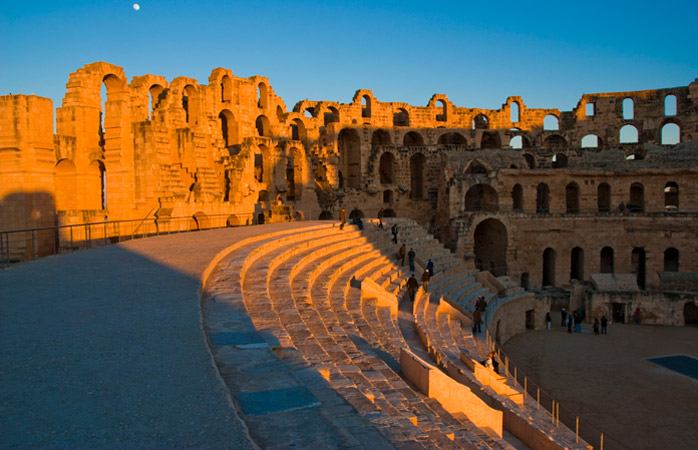
In the heart of the picturesque eponymous village – an hour’s drive south of the city of Sfax – this 3rd century amphitheater is one of the most important relics of the Roman Empire in North Africa. It was once able to accommodate up to 35,000 spectators in gladiator competitions and chariot races.
Declared a World Heritage Site in 1979, the ruins of the El Jem Amphitheater have been used as filming locations for films such as Gladiator and Monty Pyton: Brian’s life.
Bagan – Mandalay Region, Myanmar

Before the dusty winds and the Irrawady River destroy what is left of them, go quickly to the Bagan Temples . Of the 4,000 temples and pagodas built in the 9th century, some 2,000 have stood the test of time, spread over a large area like the island of Manhattan. The Ananda Temple is one of the most visited, with its Buddhas standing and its golden stupa rising to 55 meters. The best time to get there is during the rainy season, between June and October, when you will avoid the crowds and the heat of summer. Just like for Angkor, the ideal is to get up early and climb to the top of one of the 5 accessible pagodas, to admire the sun rising over the misty plain and temples invaded by trees.
Hierapolis-Pamukkale – Denizli, Turkey
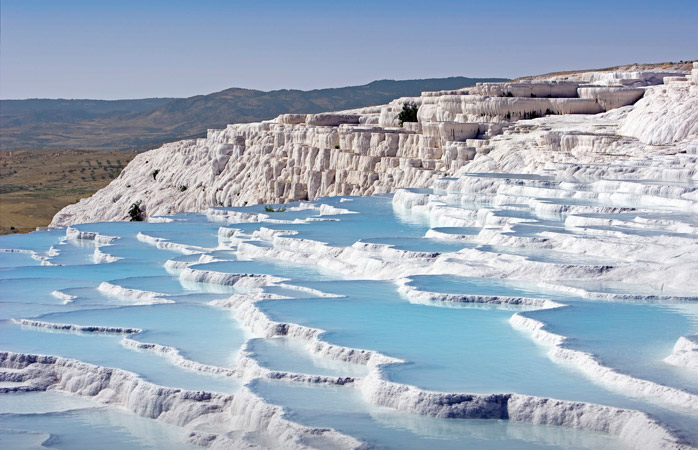
Have you ever dreamed of walking on the clouds? Well, with a little imagination, that’s what you can do in Pamukkale , which means “cotton castle” in Turkish. Cross the immaculately white cascading terraces formed by limestone deposits from the millennial volcanic springs of Cal Mountain. To preserve the site, only dive into areas designated for walking and swimming, located between the ancient Roman columns. The Holy City of Hierapolis is located at the top of the white mountain, with its Greco-Roman baths, its temples, and an imposing 12,000-seat theater that gives an idea of what the city could be like when it was founded. in 190 BC.
Archaeological City of Jerash – Jerash, Jordan
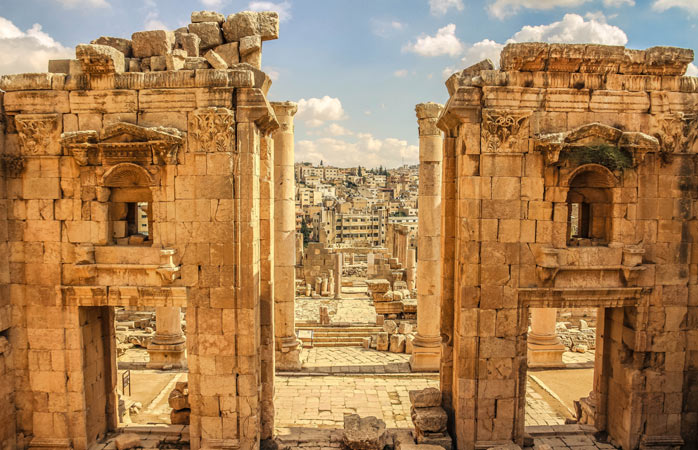
There is no doubt that one of the most beautiful archaeological sites in Jordan is of course the lost city of Petra. But in a country with such historical diversity is another historical site, just as fabulous, anchored for more than 6500 years in history and surrounded by mysteries: Jerash
With Damascus to the north, Amman to the south, and Jerusalemto the west, the ancient city of Jerash reached its peak after the Roman conquest in 63 BC, when it was one of the cities of the Decapolis, and was a major step in the Roman Empire. Beaten and bruised by war and an earthquake in 749, Jerash remained buried for more than a thousand years, until it was rediscovered in 1806. Today, she has some of the world’s best examples of Roman urbanism, with temples, theaters, public baths and colonnaded streets. And despite all these historic monuments, it is not yet a Unesco World Heritage Site! A mistake that you will correct by visiting one of the best kept secrets of Jordan.
Monumental Ensemble of Khajuraho – Madhya Pradesh, India

The next site is rated X. Joking aside, if you look more closely at the bas-reliefs on the facades of the 20 temples of the monumental Khajuraho , you might be surprised to see erotic sculptures rather explicit. Walking through the Hindu and Jain temple complex, you can also admire the Indian art and pay homage to Shiva, Vishnu, Ganesha, Surya, the Sun God, and the mighty Mount Meru, considered the center. physical, metaphysical and spiritual universes.
Mesa Verde National Park – Colorado, United States

If you are looking for historical sites and monuments in the US, you will have to look far beyond the Declaration of Independence of 1776, and return to the Anasazi era, which lived on the land of God from 550 BC .
Their site is now in the Four Corners area, where Utah, Colorado, New Mexico and Arizona meet, in the Mesa Verde National Park , established by President Theodore Roosevelt in 1906 to “preserve the works of the man “. And Roosvelt was not exaggerating at all. With more than 4700 archaeological sites in the park, including 600 troglodyte dwellings, pueblos and a Sun Temple, this park offers an unprecedented view of Native American culture.
Mycenae – Argolis, Greece

Pinch yourself, you are not dreaming. This is really the citadel described in Homer’s Iliad. Visit the ruins of Mycenae : you will literally stand on remains dating back to the 16th century BC. With a little imagination, you can even reconstruct the property, with its ramparts, the Lion Gate (main entrance), and tombs tholos (domed). The kings buried in the tomb of the Treasury of Atreus would have been posed here with their swords, jewels and valuables. Unfortunately looted, no body was discovered by archaeologists. A treasure that you can still admire and that has not changed for centuries is the panoramic view of the mountains, the endless valleys, and the sea in the distance.
Palenque – Chiapas, Mexico

As in a Predator scene, explore the mystical site of Palenque in Mexico. Surrounded by a dense jungle, do not go too far from the pyramids and the tourist paths, even if the monkeys perched at the top of the trees call you.
The best time to get there and admire the view of the Tumbala Mountains and the Usumacinta that winds between the plains is in the morning, in the cool, from the top of the Temple of Inscriptions. Then head to the museum near the site to see the jewels, masks and other precious ornaments found in these 7th century tombs.
Our tip : Refresh yourself in the swimming pool formed by Misol-Ha, the 30-meter waterfall that is 35 minutes away.
Prambanan Temple – Java, Indonesia
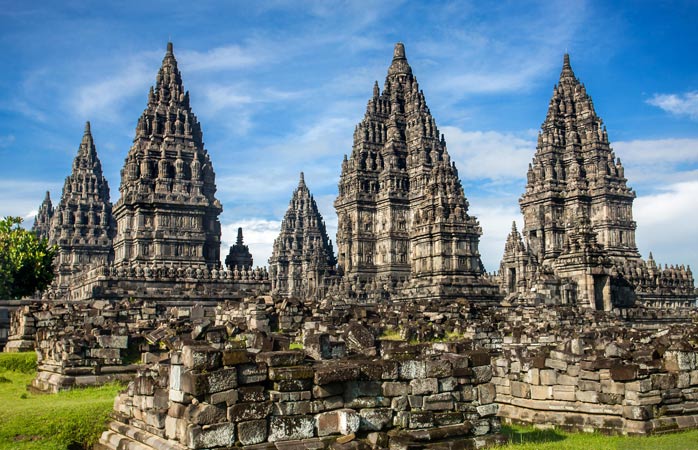
Discovered in 1811, the ruins of Prambanan, the biggest Hindu temple in Indonesia, attracts more than 1 million visitors a year. Do not worry, there is room for everyone in this complex that once contained 250 temples, although most people gather around the three main ones. Brave the crowd, however, to see these historic monuments under the constant threat of devastating earthquakes in the region. Temples are showcased during year-round shows – such as the Tawur Agung, a Hindu ritual held on the eve of Nyepi (March or April, at the time of the new moon) to chase away evil spirits. It is a colorful show made of recitations, chimes and paper effigies symbolically burned before sunrise. In October,
Roman Baths – Bath, United Kingdom
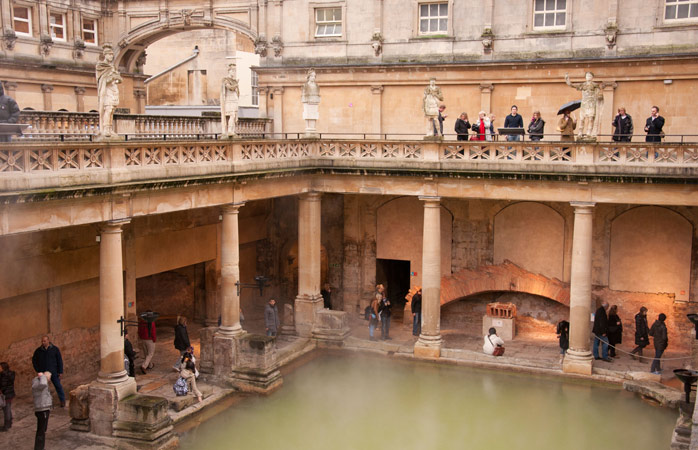
To go to the baths of Bath , you will have to do with the million visitors who go there each year. Visit the large outdoor pool that is part of this site built on three hot springs exiting at 46 °. Admire the Head of Minerva, as well as 12,000 pieces of Roman coins discovered after they have been thrown into the sources.
Do not be surprised to meet people dressed in Roman costumes, they are rehearsal actors of the time of Aquae Sulis (the Latin name of Bath) who share their stories to who wants to hear them. The site has a cafe where you can have tea and taste the water sources (not really tasty though).
Our advice : To avoid crowds, buy your ticket online, and come in the morning, mid-week, except July / August.
Pompeii – Province of Naples, Italy
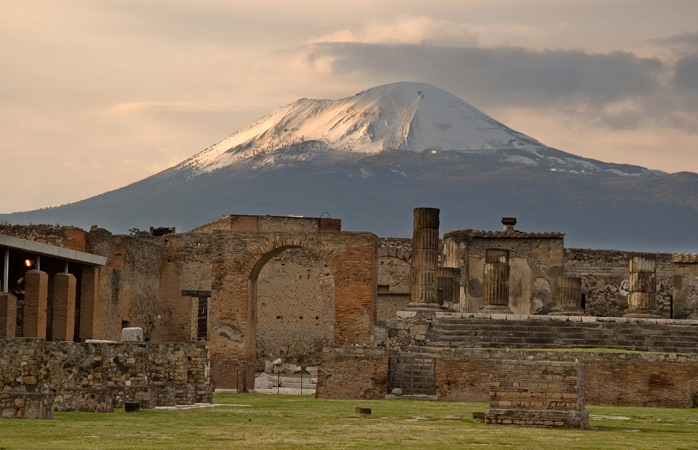
The ghost town of Pompeii does not really need to be presented. Since the murderous eruption of Vesuvius in 79 AD and until it was discovered in 1748, the monuments and the 2000 victims have been buried under a thick layer of volcanic ash. You can begin your visit to the Basilica, the city’s most important public building, unless you prefer to pose as a gladiator in the 20,000-seat amphitheater. It is impossible to miss the “Fugitive Garden”, where the casts of the fossilized bodies are … But life was not always so dark, as evidenced by the colorful fresco on the recently restored walls of the Villa dei Misteri.
The Mausoleum of Emperor Qin (The Terracotta Army) – Xi An, China

The site dates back to the 3rd century BC, and includes the tomb of Emperor Qin Shi Huang, founder of the first Chinese empire, but also the remains of several thousand terracotta soldiers, some unearthed, some still buried. Discovered in 1974, the so-called “Terracotta Army” has been a UNESCO World Heritage Site since 1987.
The Mausoleum of Emperor Qin is an opportunity to observe one of the largest excavations in the history of mankind. One day, the tomb of the Emperor may be updated: it is for the moment buried because it is said surrounded by a very high dose of mercury. Prefer to go there in the spring or fall, to avoid being an army of tourists, and have an audio guide to discover the history of this fabulous site.
Moai de Rapa Nui – Easter Island, Chile
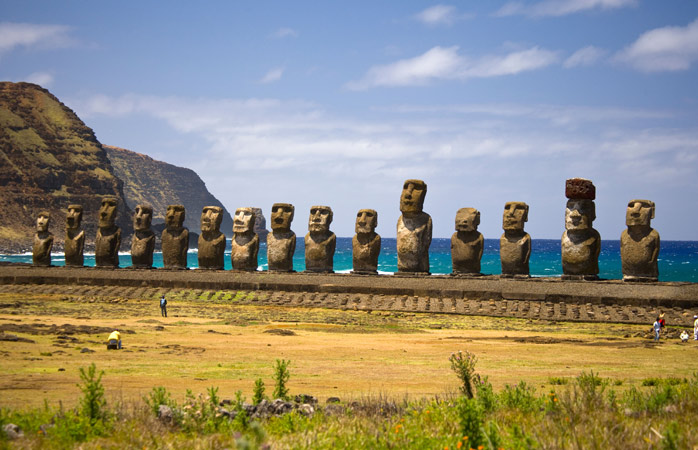
Go literally away from everything by taking the next flight to Easter Island, also known as Rapa Nui , the most isolated inhabited island on the planet. There will be only you and the 6000 inhabitants of the island, and of course, the 900 Moais statues carved in the tuff which are certainly one of the most famous historical monuments in the world. Take a look at those between 2 and 20 meters wide scattered in the hills of the small Chilean island, or join the other 15 wisely lined up at Ahu Tongariki.
Take a flight to Rapa Nui that leaves daily from Santiago in Chile, or every week from Papeete , Tahiti.




